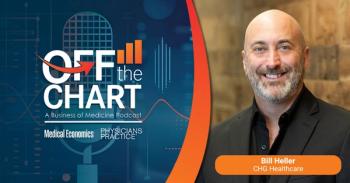
- Physicians Practice June 2025
- Volume 3
- Issue 3
2025’s medical practice challenges: Prior authorizations, a staffing squeeze and rising costs
Medical practices face significant challenges in 2025, including payer issues, staffing shortages, and rising costs, impacting patient care and operational efficiency.
Every spring, Physicians Practice polls medical practices to pinpoint what keeps their administrators up at night.
In the
Staffing woes came in a close second at 56%, followed by cost inflation at 42% and the familiar drag of administrative bloat at 38%. Electronic health record (EHR) pain, billing friction and burnout round out the list. The numbers confirm what we frequently hear from our audience: The pressure on independent and employed groups is coming from every direction.
Payer friction
The prior authorization saga has only deepened in the past 12 months. The American Medical Association’s April survey found the average physician now fields 39 authorization requests a week, a workload the association calls “way too many” and one that siphons off nearly two business days of staff time. Congress is circling the issue again — there’s bipartisan support for streamlining authorizations — but reforms have yet to move. Until they do, practices will keep burning resources on phone calls and portal clicks instead of patient care.
Staffing shortfalls
Our survey echoes Medical Group Management Association (MGMA) polls showing that 70% of groups still battle turnover while one-third report it is getting worse. Medical assistants (MAs) remain the hardest seat to fill, according to MGMA’s May snapshot, outpacing coders, nurses and even primary care physicians. The Association of American Medical Colleges projects a nationwide shortage of up to 86,000 physicians by 2036, and it’s clear that recruitment incentives alone can’t solve the gap.
The cost crunch
Inflation has eased for the economy at large, but medical practices still feel it in wage demands, rent and supplies. At the same time, Medicare trimmed the physician conversion factor again on Jan. 1, 2025, down 2.83% to $32.35. That marks the fifth straight annual cut and, when adjusted for inflation, a 33% real dollar decline since 2001. The math is simple: Rising expenses plus shrinking reimbursement equals thinner margins and harder choices about capital investments.
Administrative burdens and EHR fatigue
Nearly 4 in 10 clinicians in our poll singled out “administrative burdens,” often code for documentation overload, quality reporting and battling insurance denials. Fresh KLAS data show that even organizations that are recently live on new EHR platforms still struggle to lift physician satisfaction above prelive levels. Artificial intelligence (AI) chat assistants promise relief, but only 2% of our respondents listed “introducing new tech, including AI” as a top priority this year — proof that budgets and bandwidth remain tight.
One important challenge not included
Cyber risks didn’t crack the top tier of our survey, yet they loom larger than ever. The Health-ISAC reports that ransomware and third-party data breach incidents continue to surge in 2025, targeting clinics as aggressively as hospitals. The U.S. Department of Health and Human Services responded with the first major Health Insurance Portability and Accountability Act security rule overhaul in more than a decade, rolling out tougher breach notification and minimum standard requirements. Any practice that hasn’t tested its downtime plan since the Change Healthcare outage (which froze electronic claims for weeks) is flying blind.
What now?
No single policy fix will untangle this knot. But the data point toward practical next steps:
Advocate louder: PA reform and payment stability have rare bipartisan traction; physician voices can keep them on Capitol Hill’s front burner.
Keep recruiting creatively: Flexible schedules, tuition repayment perks and career ladder programs help retain scarce MAs and nurses.
Audit costs ruthlessly: Benchmark every line item against MGMA quartiles and renegotiate supply and information technology contracts before the January fee schedule cut lands.
Invest in resilience: Cyber insurance, tabletop drills and vendor-neutral data backup plans are no longer optional.
Physicians Practice will keep a close eye on these flash points and on the solutions that innovative groups are already piloting. If your team has cracked the code on any of them, drop me a note. In the meantime, we’ll continue to surface strategies, data and voices that help practices survive and thrive in the year ahead.
Be sure to check out this month's
Be sure to check out
Articles in this issue
Newsletter
Optimize your practice with the Physicians Practice newsletter, offering management pearls, leadership tips, and business strategies tailored for practice administrators and physicians of any specialty.








